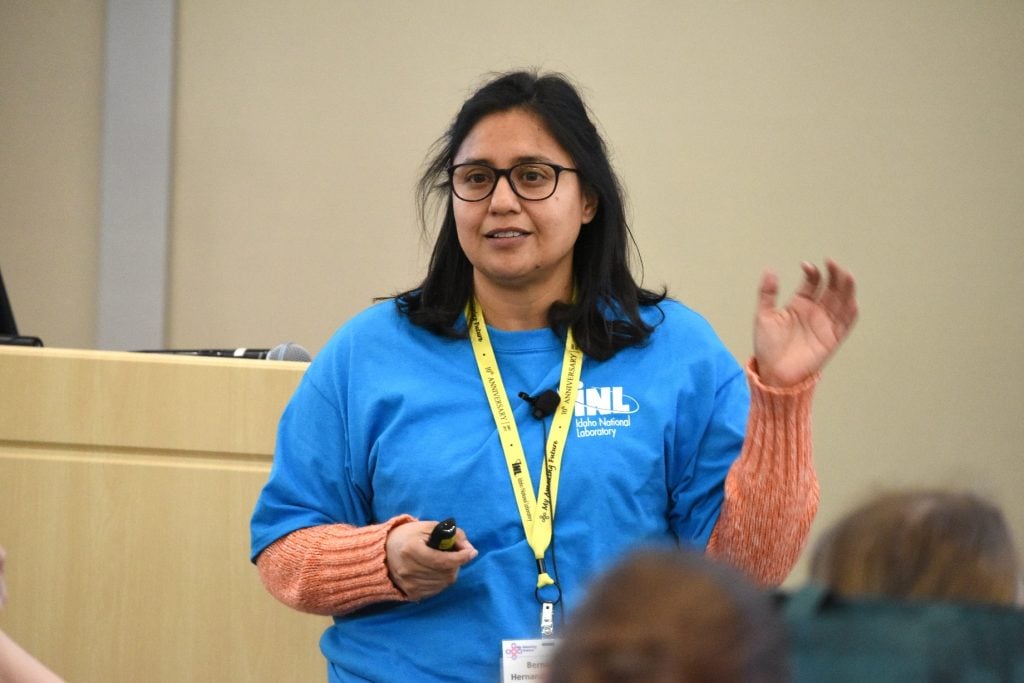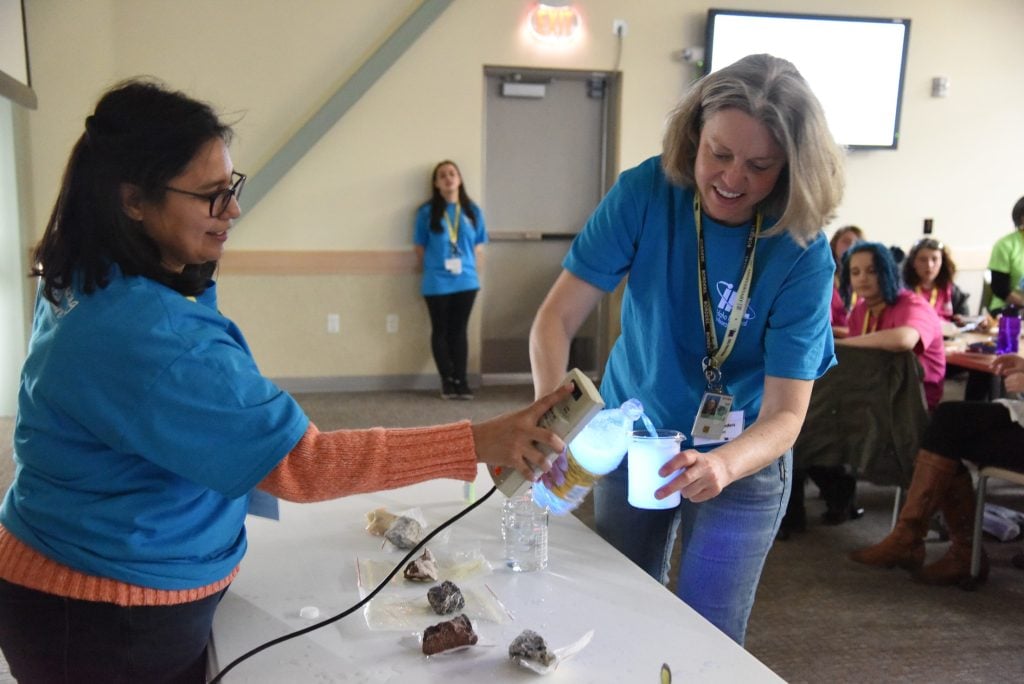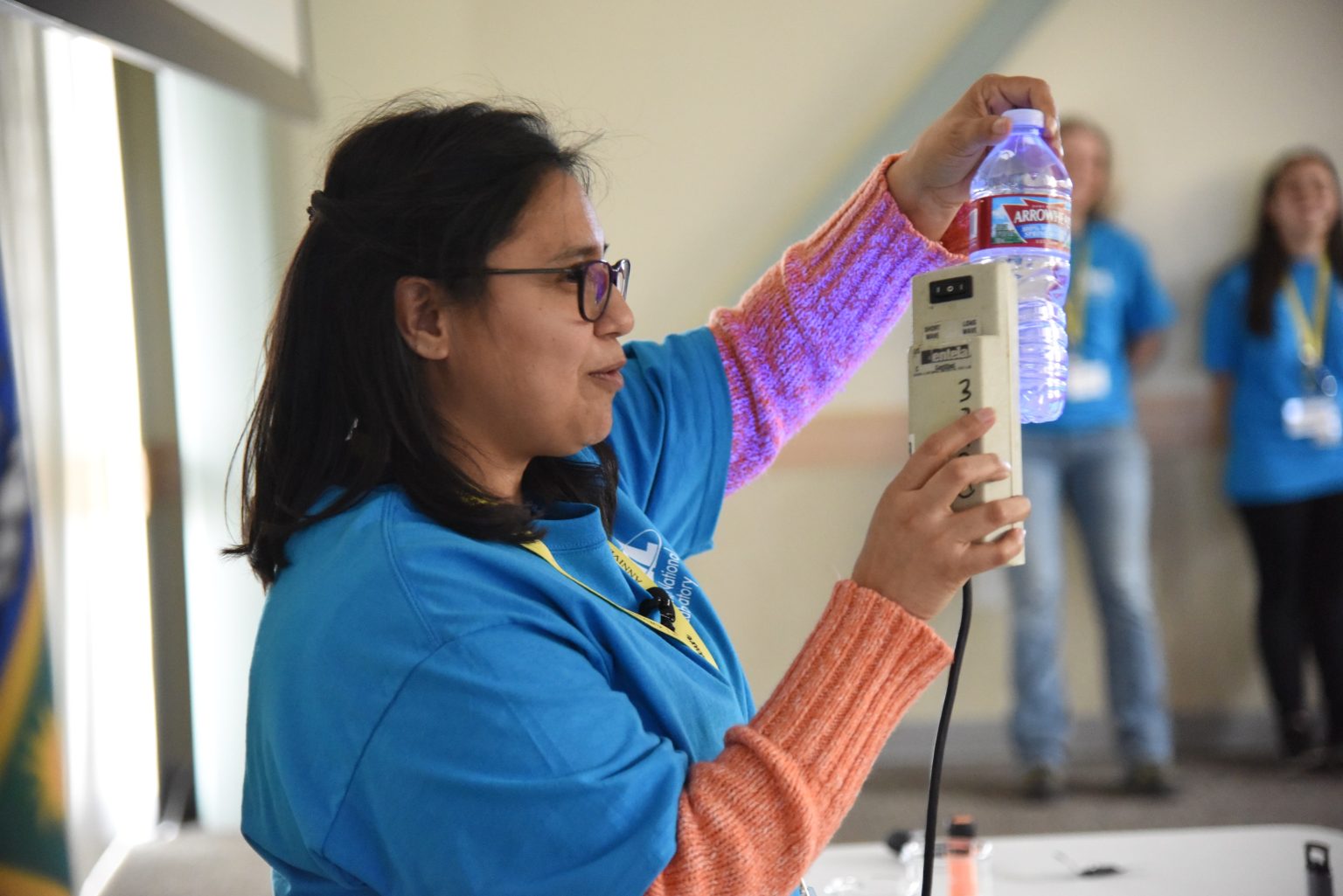On her visit to Idaho Falls in mid-March, Dr. Bernadette Hernandez-Sanchez of Sandia National Laboratories (SNL) had two stories to tell.
One was personal, shared with 160 eighth-grade girls at Idaho National Laboratory’s “My Amazing Future” event. At lunch March 10 at INL’s Energy Innovation Laboratory, Hernandez-Sanchez – who goes by “Bernie” – gave a warm account of how she, a Hispanic girl from Albuquerque’s South Valley, discovered a love for science that led her to apply for high school internships at Sandia. There she discovered a second family.
As much as she loved being in the laboratory, however, the academic side of becoming a scientist was hard for her. “I had to catch up on the ‘whys,’” she said. She stuck it out and did her best, earning her bachelor’s degree in chemistry from New Mexico Tech and her doctorate in solid state inorganic chemistry from Colorado State University. She returned to Sandia in 2004 as a postdoctoral researcher, and in 2008, she became a member of technical staff in Sandia’s Ceramic Processing & Inorganic Materials Department. Today she is project lead of Sandia’s Advanced Materials Program and the U.S. Department of Energy’s Marine and Hydrokinetic Technology Database (MHTDB).

Hernandez-Sanchez’s other story was one she shared with scientific peers at INL during her two-day visit. This was about the work she and her teams are doing for Sandia’s Advanced Materials Program. Marine hydrokinetic energy (MHK) from ocean currents, tides and changes in water temperature has the potential to produce 2,640 terawatt-hours (TWh) annually. Because more than 50 percent of the U.S. population is concentrated near coastlines, MHK has potential to dramatically reduce U.S. dependence on fossil fuels.
Wave power also has been considered as a possible energy source for desalination, but before any technology can come to full fruition, researchers face challenges that can only be found under the sea. Sanchez-Hernandez and her colleagues are focused on understanding the properties and performance of materials and coatings that can stay functional in an environment where biofouling and corrosion are ever present.
How does a scientist at a lab in the New Mexico desert find herself investigating ways to improve energy generated by currents, tides and changes in ocean temperature? It started with work in wind power, Hernandez-Sanchez said. Sandia’s strong background in the design and analysis of wind-turbine rotors has allowed them to apply a variety of fluid and structural dynamics modeling tools in the design of MHK turbines. Sandia has worked with others to develop MHK tidal turbine designs to minimize power performance losses from soiling/biofouling, and to reduce the likelihood of cavitation.
Spanning the MHK and wind research areas, Sandia’s Advanced Materials Program is dedicated to performing research in materials, coatings, adhesives, inspection and manufacturing processes to produce reliable, cost-effective renewable energy devices. Advances from Sandia’s nondestructive inspection programs in Wind Energy and its FAA Airworthiness Assurance NDI Validation Center are being applied to MHK. Sandia also updates and maintains DOE’s Marine and Hydrokinetic Technology Database, which provides up-to-date information on marine and hydrokinetic renewable energy in the United States and around the world.
Sandia has also been a key player in DOE’s Reference Model Project (RMP), a partnership between DOE and four national laboratories — Sandia, the National Renewable Energy Laboratory (NREL), Pacific Northwest National Laboratory (PNNL), and Oak Ridge National Laboratory (ORNL). Working with these partners, six types of MHK devices have been developed and modeled.

Dr. Tammie Borders, INL’s industry coordinator, who accompanied Hernandez-Sanchez on her visit to the lab, said she sees a number of possibilities for future collaboration along the same lines. While in Idaho, Hernandez-Sanchez had appointments with Lori Braase, Gateway for Accelerated Innovation in Nuclear (GAIN) coordinator, and Tim Hyde, fuel fabrication and nuclear materials director at INL’s Materials & Fuels Complex.
“The data analysis could lead to new partnerships not only in MHK, but with wind and nuclear energy, too,” Borders said. Much of Sandia’s MHK work in corrosion resistance has been done in collaboration with the shipping industry, which, like the nuclear industry, is large and entrenched. “The similarities across market sectors could lend itself well to the nuclear world,” Borders said.
Back in New Mexico, Hernandez-Sanchez said she was excited by what she saw in Idaho: the possibilities for collaboration, especially in data analysis and advanced manufacturing, and a new generation of scientists. “I think there are a lot of opportunities for girls who want to pursue careers in STEM,” she said. “If you like it, you’ve got to pursue it, because you’ll never know what you missed if you don’t.”





